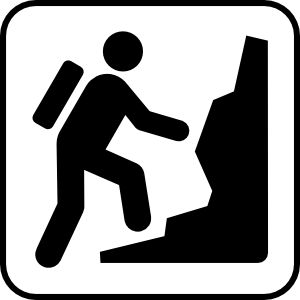
by Diane Masson | Apr 28, 2013
 After the initial tour are you or your senior living sales people classifying the lead correctly in your database and following up with the prospective resident appropriately?
After the initial tour are you or your senior living sales people classifying the lead correctly in your database and following up with the prospective resident appropriately?
What is your retirement community’s definition of a hot lead?
Many senior housing professionals only classify a lead as HOT if:
- The senior says they want to move someplace right away.
- They tell you their home is on the market.
- The adult child says their mom or dad is in the hospital and can’t move back home.
Here are some more lead situations that I would classify as hot (Even if they say – “I AM NOT READY YET!”):
- The senior is considering putting their home on the market.
- Someone wondering how long they should continue living in their home.
- Telling you they are about a year away, but also saying it has been difficult managing in a two story home.
- My spouse has just been diagnosed with…
Prospects don’t jump up and down and say I am an easy sale. Senior Living Sales is an art and it’s up to us to read between the lines. If someone comes to see you in person, they should be a warm or hot lead until they clearly indicate they are not. They walked into your senior living community for a reason…
Post-analyze their situation in the quiet of your office. This can help you strategize how you can help move someone forward the next time you talk to them. Some sales people (particularly green sales people) can benefit from strategizing with their boss to determine the next course of action with a prospective resident.
Can anyone share how they read between the lines, helped a senior solve their problem and it resulted in a move in?
Please comment to join the conversation and interact with other senior living professionals on what is currently being effective to increase occupancy on a nationwide basis.
Diane Twohy Masson is the author of “Senior Housing Marketing – How to Increase Your Occupancy and Stay Full,” available for sale at Amazon.com. Masson’s book will be required reading at George Mason University in the Fall as part of the marketing curriculum. She is currently consulting with Seniors For Living and two debt-free Continuing Care Retirement Communities in Southern California – Freedom Village in Lake Forest and The Village in Hemet, California. Connection and partnership opportunities: Email: diane@marketing2seniors.net

by Diane Masson | Apr 21, 2013
 Yes, this blog post is about one word for senior living sales people today! Do you have it or not?
Yes, this blog post is about one word for senior living sales people today! Do you have it or not?
- Persistence is 100 phone calls a week, when you don’t have many tours happening.
- Persistence is believing a senior will move in eventually, even when they say they are not ready yet.
- Persistence is calling back your sale, just to make sure they are okay – when they may be very stressed out about moving to your community.
- Persistence is continuing to smile and dial after hearing 15 no’s in a row.
- Persistence is calling someone back after they hung up on you a week ago (they were only having a bad day and now they are fine).
- Persistence is generating the energy between 3:00 to 5:00 PM to continue calling the database.
- Persistence is calling someone the next day after a tour or an event, while the prospect’s emotion is still high.
- Persistence is asking a senior what their time frame is for moving in, after they said they are not ready yet.
- Team persistence is calling through your retirement community’s database every four months.
- Persistence is leaving a message for someone once a month for year and they finally walk in your office, recognize your voice and say they are ready to move in now – yes this happened to me.
This blog post is dedicated to the FBI in Boston, who persistently tracked the bombing suspects.
Please comment to join the conversation and interact with other senior living professionals on what is currently being effective to increase occupancy on a nationwide basis.
Diane Twohy Masson is the author of “Senior Housing Marketing – How to Increase Your Occupancy and Stay Full,” available for sale at Amazon.com. Masson’s book will be required reading at George Mason University in the Fall as part of the marketing curriculum. She is currently consulting with Seniors For Living and two debt-free Continuing Care Retirement Communities in Southern California – Freedom Village in Lake Forest and The Village in Hemet, California. Connection and partnership opportunities: Email: diane@marketing2seniors.net

by Diane Masson | Apr 14, 2013
 Are you worn out and exhausted? Is it an effort to get up and get to work each day? What happened? You love your senior housing job – what’s wrong? It is called burn out, burning the candle at both ends.
Are you worn out and exhausted? Is it an effort to get up and get to work each day? What happened? You love your senior housing job – what’s wrong? It is called burn out, burning the candle at both ends.
Think about how work and home life has changed in the last 20 years. Smart phones live with us 24 hours a day. The line has blurred between work and home and senior living sales people are getting fried out emotionally. Are you cooking dinner with the smart phone on the counter in case someone calls or texts you? People are in restaurants having $20 to $30 dinners and texting…this is not a nice experience for your table companions.
Get off the electronic leash for a few hours or a half-day. My boss is taking a cruise and will have no cell coverage for 10 days. My first thought was oh my gosh, I will be cut off from contacting her. My next thought was – boy is she lucky! Could you go without electronic stimulation for a day or a week? Could I do it? It would be very difficult. But I would adjust after a day or two and so would you.
Take time to recharge. If you are introverted, you recharge better by yourself. An extrovert recharges through the energy of their friends. Know what helps you recharge and spend one day recharging your personal batteries. Your work and your family will both benefit.
Please comment to join the conversation and interact with other senior living professionals on what is currently being effective to increase occupancy on a nationwide basis.
Diane Twohy Masson is the author of “Senior Housing Marketing – How to Increase Your Occupancy and Stay Full,” available for sale at Amazon.com. Masson’s book will be required reading at George Mason University in the Fall as part of the marketing curriculum. She is currently consulting with Seniors For Living and two debt-free Continuing Care Retirement Communities in Southern California – Freedom Village in Lake Forest and The Village in Hemet, California. Connection and partnership opportunities: Email: diane@marketing2seniors.net

by Diane Masson | Apr 7, 2013
 When you initially sit down with a senior prospective resident – what is their first impression of you? Are you like a detective on TV, asking care needs – one after another? Or are you the compassionate sales person who cares and wants to help the senior solve their problem?
When you initially sit down with a senior prospective resident – what is their first impression of you? Are you like a detective on TV, asking care needs – one after another? Or are you the compassionate sales person who cares and wants to help the senior solve their problem?
When I do mystery shopping, I find that 80% of senior living sales people are interrogators. This is an extremely high statistic; this means that only 20% of sales people come across as kind and compassionate.
How can you know if you are an interrogator and don’t mean to be one?
1) Don’t get to the nitty gritty details too fast…
2) Do offer a beverage – especially when it’s hot outside– I have been touring on 90-degree days and was not offered a beverage – this really happens…
3) Invite guests to sit down – don’t tell them to sit here or just point to a chair…
4) Don’t shut a prospective resident in your office – this happened to me 80% of the time and causes people to keep their wall up and not relax with you.
5) Don’t sit across a desk from someone, give up your control and meet around a round table, in the lobby on comfy chairs or in the model apartment.
6) Find out about what is most important to the senior or the adult children…why did they come to your retirement community today?
7) Do ask how they are doing (what they are feeling) and take the time to listen!
Do you want to increase sales, move-ins and up the occupancy? Then stop interrogating people…it is a horrible experience for the senior and their family members!
Please comment to join the conversation and interact with other senior living professionals on what is currently being effective to increase occupancy on a nationwide basis.
Diane Twohy Masson is the author of “Senior Housing Marketing – How to Increase Your Occupancy and Stay Full,” available for sale at Amazon.com. Masson’s book will be required reading at George Mason University in the Fall as part of the marketing curriculum. She is currently consulting with Seniors For Living and two debt-free Continuing Care Retirement Communities in Southern California – Freedom Village in Lake Forest and The Village in Hemet, California. Connection and partnership opportunities: Email: diane@marketing2seniors.net

by Diane Masson | Mar 31, 2013
 This week I want to share with you which four techniques I used to train a new “green” sales person recently.
This week I want to share with you which four techniques I used to train a new “green” sales person recently.
Last week, I talked about four sales training techniques in “How to Train a “Green” Senior Living Sales Person (Part 1)”: Shadowing an existing sales person, throwing the new “green” person in (with no senior housing experience) to just start selling, sending them out to study the competition and a dedicated all day training.
Recently, the first step I used training a “green” sales person was an all day training with the marketing team. This was crucial, so she could have immediate knowledge of how this business works in a nutshell. I interactively taught her and the team how to engage with a prospective resident, build a relationship in a short time and help someone make a decision to move to our community for the next chapter of his or her life. She heard the successes of the other retirement counselors and she started to visualize how easy this business can really be.
The second step was letting HR do their thing and allowing her to shadow some quality senior living sale people, so the all day training would sink in a little more.
The third step was sending her out to study the competition. This helped her articulate the strengths and weaknesses of our Continuing Care Retirement Community versus the retirement community down the street. She truly saw the business through the eyes of the senior customer and learned what a senior housing interrogation, from one of our neighboring competitors, can feel like.
The fourth step was having her start to become a student of this business. She started studying the web site, all the marketing materials and reading a senior housing book with 12 keys to marketing senior housing. During training there is a half an hour here or an hour there, when the trainer (me) may need to address something that has nothing to do with training. These can be opportunities for the “green” person to read a chapter of a senior housing training book like “Senior Housing Marketing – How to Increase Your Occupancy and Stay Full.” Part of the reason, I wrote this book was to help train “green” sales people quickly.
Actually, I used all the steps that I talked about in Part 1, except throwing them in to sink or swim. Once my “green” person knew the right way to build a relationship with a prospective resident, I sent them out to study the competition and their eyes were opened. They have no doubt that our Continuing Care Retirement Community is the best. I think it is vital to get your person to believe in their heart that your retirement community is the best and a great value for the money – as soon as possible.
Good luck and I would love to hear your stories of what training techniques worked best for your new employees and why…
Please comment to join the conversation and interact with other senior living professionals on what is currently being effective to increase occupancy on a nationwide basis.
Diane Twohy Masson is the author of “Senior Housing Marketing – How to Increase Your Occupancy and Stay Full,” available for sale at Amazon.com. Masson’s book will be required reading at George Mason University in the Fall as part of the marketing curriculum. She is currently consulting with Seniors For Living and two debt-free Continuing Care Retirement Communities in Southern California – Freedom Village in Lake Forest and The Village in Hemet, California. Connection and partnership opportunities: Email: diane@marketing2seniors.net

by Diane Masson | Mar 24, 2013
 When a brand new sales person starts, what is most important to teach first? My definition of “green” is that they have never worked in senior housing before. “Part-green” means they have some background in senior housing like working in the homecare industry. I love coaching “green” and “part-green” senior living sales people.
When a brand new sales person starts, what is most important to teach first? My definition of “green” is that they have never worked in senior housing before. “Part-green” means they have some background in senior housing like working in the homecare industry. I love coaching “green” and “part-green” senior living sales people.
So what do you teach a “green” sales person in the first couple of weeks?
Is it shadowing an existing sales person? You may or may not be lucky enough to have a quality person they can shadow. It can be very helpful, but it can also get a little boring for the trainee. If this is your whole training program, then you are missing the boat of opportunity.
Do you just throw them in to sink or swim immediately? This might not be the brightest idea. They don’t understand the business and what you offer yet. Leads are money, so are you willing to just blow off some potentially hot leads, because a “green” person does not know how they should be managed properly? Some smaller retirement communities have no choice, because they only have one marketer.
Or do you send them out to study the competition? This can be very important in the first couple weeks of training and allows them to compare senior housing communities like the prospects would. They can start to articulate the strengths and weaknesses of their own community versus the retirement community down the street.
How about a dedicated all day training? You could spend a whole day with an interactive program that explains how the prospect really thinks, what to do when the prospect arrives at your community, how to ask discovery questions without interrogating someone, the steps on giving a “wow” tour, helping the prospect connect that your community is the answer to their problem and how to complete the interaction at the end — with determining the next step(s). This is how I started a “green” person two weeks ago.
What has worked and not worked for you – training “green” sales people? Next week I will share what techniques I use training “green” sales people and why…
Please comment to join the conversation and interact with other senior living professionals on what is currently being effective to increase occupancy on a nationwide basis.
Diane Twohy Masson is the author of “Senior Housing Marketing – How to Increase Your Occupancy and Stay Full,” available for sale at Amazon.com. Masson’s book will be required reading at George Mason University in the Fall as part of the marketing curriculum. She is currently consulting with Seniors For Living and two debt-free Continuing Care Retirement Communities in Southern California – Freedom Village in Lake Forest and The Village in Hemet, California. Connection and partnership opportunities: Email: diane@marketing2seniors.net
![]() After the initial tour are you or your senior living sales people classifying the lead correctly in your database and following up with the prospective resident appropriately?
After the initial tour are you or your senior living sales people classifying the lead correctly in your database and following up with the prospective resident appropriately?




